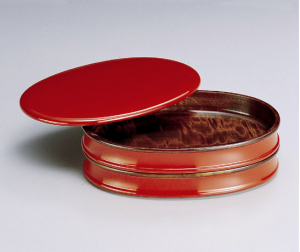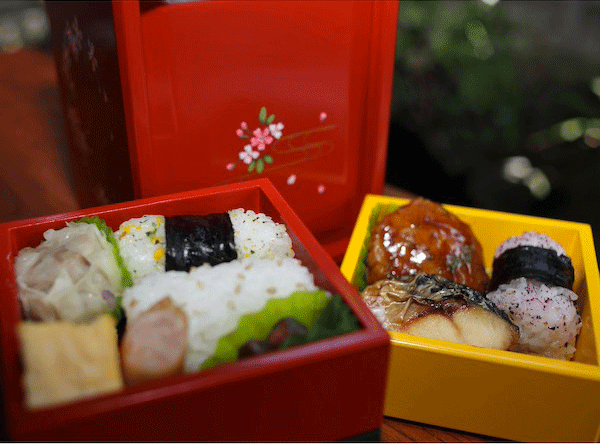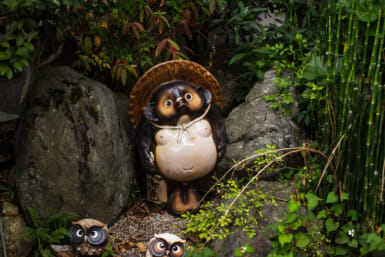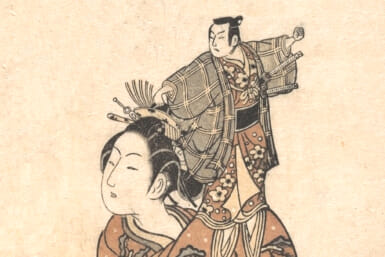A good bento starts with the box – after all, the container keeps it all together and lifting the lid to a colourful assortment of dishes is perhaps the most rewarding part. The idea of bento itself is said to have origins tracing all the way back to the late Kamakura Period (1185 to 1333), when both cooked and dried rice were stored in a small bag, to be boiled with water or eaten as is. In the Edo period, bentos were packed in simple bamboo leaves but, nowadays, of course, you can take your pick amongst the choices of boxes: lacquered, wooden, metal, or plastic, not to mention all the sizes and shapes, and multi-leveled ones.
And it doesn’t stop there. Although pretty much anything goes when it comes to the food inside, a well-balanced bento tends to contain healthy, fresh ingredients and present five colours of ingredients: red, yellow, green, black, white. Any gap should be filled so everything is kept together tightly and stopped from shifting in a bag on the way to school or the office… In other words, aesthetics matter just as much as the nutritional value.

Some boxes bring a touch of class to lunchtime.
As the bento trend is catching up overseas, various articles (such as this one in the New York Times) have been written on the subject, each analyzing the reason behind why visuals are so important in Japanese culture.
Going further than a classic bento is the kyaraben, which is a “character” bento and popular with kids.
Tots digging in to a homemade Hello Kitty-shaped rice ball or Rilakkuma-themed lunch box, which mothers dutifully crafted at the crack of dawn, is not an unusual sight in kindergartens and primary schools. There’s seemingly lots of competition, stress and pressure amongst those mothers, and even children…
It’s easy to pick up a bento box at just any shop, but it’s a good idea to invest in a quality one if you plan on using it regularly. Artisans all across Japan are making handcrafted bento boxes that are indeed works of art, and you can even find quirky ones – you wouldn’t want to get mixed up with a colleague, after all…
For example, Tokushima prefecture has the unique yusanbako, a traditional 3-tiered lunch box (pictured at the top) that was used several decades ago. The box could also, we suppose, be used to store accessories or jewelry.
Regardless of your skill level in the kitchen, your bento should mean a straightforward way to put food together for lunch, and a healthy alternative to eating out or take out from restaurants.
The box pictured above is a favourite of ours. To have a look at more like this and to get more information on the craftspeople of Japan, or indeed to buy some of the products talked about here, visit JCRAFTS.com, who have in part sponsored this article. Jcrafts is an online shop that sells items with engrained Japanese spirit to 120 countries worldwide while aiming to also teach you all about where they come from.
Updated On April 9, 2018









